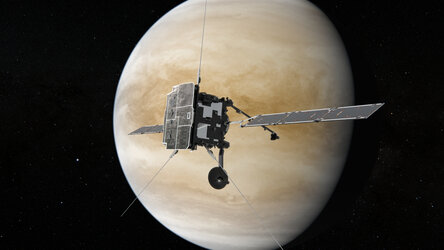Accept all cookies Accept only essential cookies See our Cookie Notice

About ESA
The European Space Agency (ESA) is Europe’s gateway to space. Its mission is to shape the development of Europe’s space capability and ensure that investment in space continues to deliver benefits to the citizens of Europe and the world.
Highlights
ESA - United space in Europe
This is ESA ESA facts Member States & Cooperating States Funding Director General Top management For Member State Delegations European vision European Space Policy ESA & EU Responsibility & Sustainability Annual Report Calendar of meetings Corporate newsEstablishments & sites
ESA Headquarters ESA ESTEC ESA ESOC ESA ESRIN ESA EAC ESA ESAC Europe's Spaceport ESA ESEC ESA ECSAT Brussels Office Washington OfficeWorking with ESA
Business with ESA ESA Commercialisation Gateway Law at ESA Careers Cyber resilience at ESA IT at ESA Newsroom Partnerships Merchandising Licence Education Open Space Innovation Platform Integrity and Reporting Administrative Tribunal Health and SafetyMore about ESA
History ESA Historical Archives Exhibitions Publications Art & Culture ESA Merchandise Kids Diversity ESA Brand Centre ESA ChampionsLatest
Space in Member States
Find out more about space activities in our 23 Member States, and understand how ESA works together with their national agencies, institutions and organisations.
Science & Exploration
Exploring our Solar System and unlocking the secrets of the Universe
Go to topicAstronauts
Missions
Juice Euclid Webb Solar Orbiter BepiColombo Gaia ExoMars Cheops Exoplanet missions More missionsActivities
International Space Station Orion service module Gateway Concordia Caves & Pangaea BenefitsLatest
Space Safety
Protecting life and infrastructure on Earth and in orbit
Go to topicAsteroids
Asteroids and Planetary Defence Asteroid danger explained Flyeye telescope: asteroid detection Hera mission: asteroid deflection Near-Earth Object Coordination CentreSpace junk
About space debris Space debris by the numbers Space Environment Report In space refuelling, refurbishing and removingSafety from space
Clean Space ecodesign Zero Debris Technologies Space for Earth Supporting Sustainable DevelopmentLatest
Applications
Using space to benefit citizens and meet future challenges on Earth
Go to topicObserving the Earth
Observing the Earth Future EO Copernicus Meteorology Space for our climate Satellite missionsCommercialisation
ESA Commercialisation Gateway Open Space Innovation Platform Business Incubation ESA Space SolutionsLatest
Enabling & Support
Making space accessible and developing the technologies for the future
Go to topicBuilding missions
Space Engineering and Technology Test centre Laboratories Concurrent Design Facility Preparing for the future Shaping the Future Discovery and Preparation Advanced Concepts TeamSpace transportation
Space Transportation Ariane Vega Space Rider Future space transportation Boost! Europe's Spaceport Launches from Europe's Spaceport from 2012Latest
ExoMars first year in orbit
Thank you for liking
You have already liked this page, you can only like it once!
An overview animation of the ExoMars Trace Gas Orbiter’s expected path around Mars between October 2016 and December 2017.
The spacecraft entered orbit on 19 October 2016, on a highly elliptical path that took it between about 250 km and 98 000 km from the planet in about 4.2 days.
The main science mission is intended to take place from a near-circular 400 km orbit, starting in early 2018. The spacecraft will achieve this orbit by aerobraking – using the planet’s atmosphere to slow down gradually.
First, on 19 January 2017, the angle of the orbit will be changed to 74º with respect to the equator, so that science observations can cover most of the planet.
Next, to get into an aerobraking orbit, the craft will fire its thrusters in early February to reach 200 x 33 475 km, which will also reduce its orbital period to 24 hours.
Aerobraking is planned to begin on 15 March, with a series of seven manoeuvres – about one every three days – that will steadily lower the craft’s altitude at its point of closest approach, from 200 km to about 114 km. Then the atmosphere will take over, gradually reducing the most distant part of the orbit.
Final manoeuvres are expected at the end of 2017 to circularise the orbit at an altitude of about 400 km, whereupon the science mission can begin.
The animation is based on data available as of end-2016, but the actual timing of the various manoeuvres may be subject to change as operational plans develop during 2017.
-
CREDIT
ESA -
LICENCE
ESA Standard Licence
-
Animation
-
-
-
-
-
-
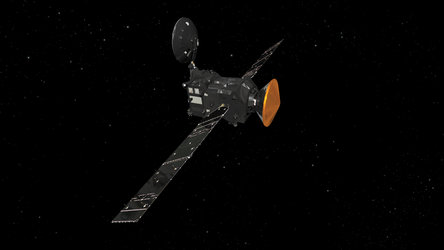
Trace Gas Orbiter with Schiaparelli

ExoMars at the Red Planet
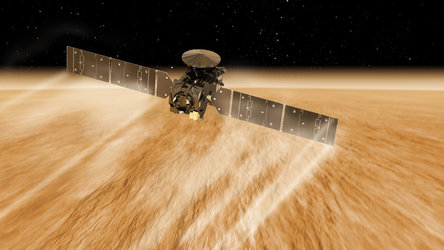
Trace Gas Orbiter aerobraking
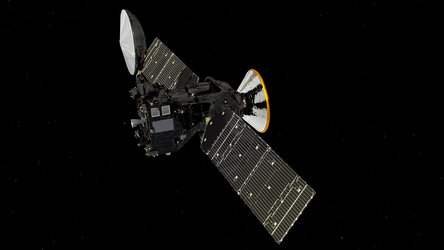
ExoMars 2016 cruise to Mars
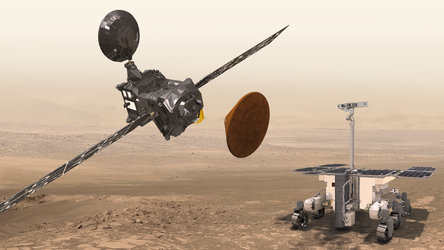







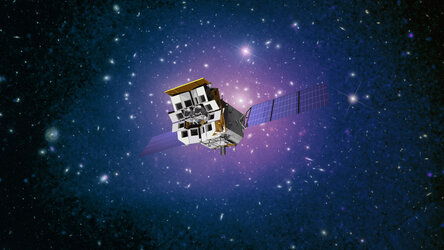






 Germany
Germany
 Austria
Austria
 Belgium
Belgium
 Denmark
Denmark
 Spain
Spain
 Estonia
Estonia
 Finland
Finland
 France
France
 Greece
Greece
 Hungary
Hungary
 Ireland
Ireland
 Italy
Italy
 Luxembourg
Luxembourg
 Norway
Norway
 The Netherlands
The Netherlands
 Poland
Poland
 Portugal
Portugal
 Czechia
Czechia
 Romania
Romania
 United Kingdom
United Kingdom
 Slovenia
Slovenia
 Sweden
Sweden
 Switzerland
Switzerland





















